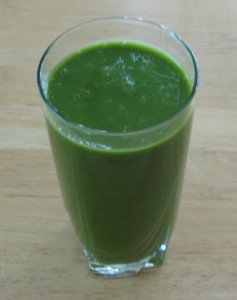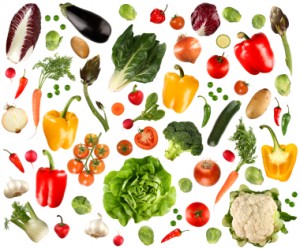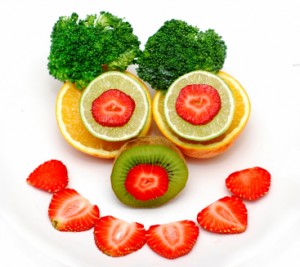I have to say, I was pleasantly surprised when I saw the recently updated dietary suggestions released by the U.S. Department of Agriculture in the form of a dinner plate, called MyPlate. The new icon presents the five food group concept, from the former food pyramid, in a simpler and more relatable style that encourages Americans to move toward a plant based diet.
The MyPlate guidelines encourage people to make half of their plate fruits and vegetables. The vegetable group contains a variety of veggies: chlorophyll-rich dark leafy greens, antioxidant rich red and orange vegetables, starchy vegetables, beans and peas, and other types of vegetables, many of which are popular staples of raw food enthusiasts. Beans and peas also fall under the protein category, as do nuts and seeds. The fruit group contains a wide variety of fruits generally available in natural food markets and grocery stores, making them easily accessible. Many fruits that raw food enthusiasts use in green smoothies can be found on this list.
The remaining half of the plate is divided into the grain group and the protein group. The grain group contains both whole and refined grain options, with gluten free choices. Raw food cuisine favorites such as buckwheat, quinoa, wild rice, and amaranth are on the list. Given that a large number of people in the U.S. consume the standard western diet with plenty of processed grains and refined grain products, the MyPlate suggestion to consume at least half of grains as whole grains is a step in the right direction. Keeping the recommendations relatable and “doable” for the general population is important encourage people to consider healthier options. I personally would like to see more of an emphasis on whole food choices.
Although the protein portion of the plate includes the choice of fish and lean cuts of red meat or chicken, there are numerous choices for vegetarians and vegans including beans, nuts, and seeds. Raw food favorites such as almonds, sesame seeds, pumpkin seeds, and cashews made the list. The MyPlate guidelines encourage people to vary their protein sources by choosing plant sources of protein.
Overall, MyPlate suggests consuming less fat and more fiber rich foods such as fruits, vegetables, grains, and beans. MyPlate also stresses the importance of exercise and eating an appropriate number of calories. Processed foods and foods that are high in added sweeteners and fats tend to be more calorie dense than whole foods, so the probability of consuming more calories per meal is much higher when one is consuming processed foods than when one is consuming whole foods.
The biggest difference between the former recommendations and the new MyPlate is the new icon, but there are some additional notable changes. For example, the dairy group on the former pyramid only gave options from dairy products, while the new MyPlate gives the plant-based option of calcium fortified soy milk. I personally would like to see this section expanded to include more calcium-rich plant-based options. MyPlate encourages people to read food labels to identify saturated fat, trans fat, sodium, and added sugar content. It also reminds people that sugar is often disguised on food labels under many names including: sucrose, glucose, high fructose corn syrup, corn syrup, and fructose. MyPlate makes an important suggestion: drink water instead of sugary drinks, because of their empty calorie content.
Overall, I applaud the USDA for suggesting that people consume whole foods, with an emphasis on whole natural plant foods. I am also happy to see the restyled presentation of their suggestions as the MyPlate icon. I think this is a very relatable and understandable way to convey dietary information to the American public. Of course, there are many areas where I would like to see improvements, but as a basic blueprint for people eating the standard western diet, I think that this model is a step in a positive direction. For those of us already consuming a whole food plant-based diet, this model provides some confirmation that we are consuming foods with numerous health benefits.
Reference: www.choosemyplate.gov




